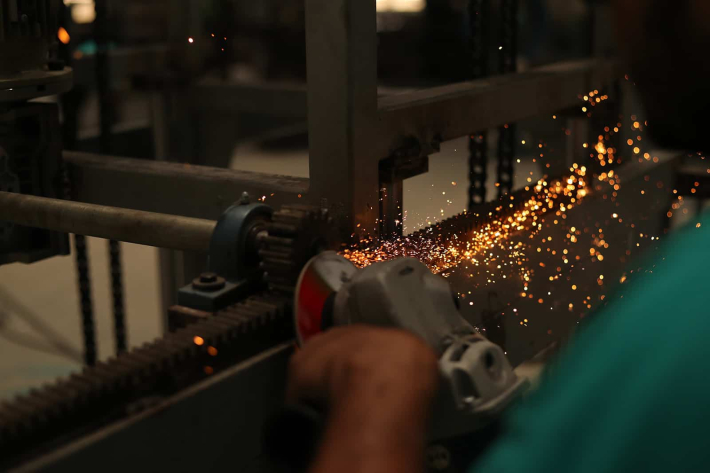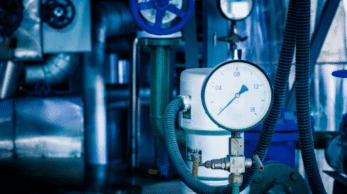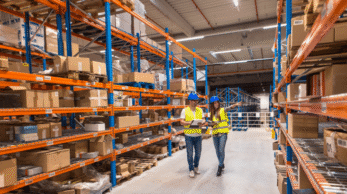Industrial companies in the transitive era of digital transformation
The industry of the future will be built on both the modernization of production tools and the digital transformation of companies’ economic models that we observe today. The French government has launched an ambitious project to support industrial companies in their transformation, with the promotion of digital tools and new technologies such as 3D printers, connected objects, big data, augmented reality, etc.
Today, companies face new major challenges, namely:
- How will these new tools and technologies transform manufacturing?
- Will these tools and methods also affect maintenance methods and services?
- How should CMMS integrate these new tools into their functionalities to bring increasingly more added value to maintenance departments and keep their key position in the industry of the future?
TRY OUR CMMS FOR FREE FOR 30 DAYS
Optimize your maintenance department with modern production tools
It is imperative today to commit to the digital transformation of industrial maintenance as maintenance has evolved and its core strategy shifted, from reactive and corrective to proactive and predictive.
By anticipating maintenance needs, it is now possible to optimize maintenance interventions and time them accordingly. This, compounded with the development of new production tools, have brought considerable advantages, including:
- Improved team productivity;
- Reduced downtime on production sites;
- Increased reactivity thanks to instantaneous information.
Thus, the digitalization of the maintenance department’s production tools increases the company’s overall competitiveness and corporate agility.
3D printers to improve the performance of maintenance teams
- Quick production of the necessary spare parts;
- Considerable cost savings (from storage, ordering…);
- Significant increase of the machines’ life span.
Drones as a preferred prevention tool
Will drones, which already offer aerial surveillance in large industrial sites, become widespread in the industry of the future?
Combined with infrared reading technologies, drones could be very useful, for example, to monitor, warn, or alert maintenance operators in case of equipment overheating.
Augmented reality to facilitate maintenance operations
Augmented reality enables the display of contextual information directly related to reality, through screens or smart glasses, which can prove useful in maintenance.
For example, when approaching a piece of equipment, the maintenance technician will be able to access information to facilitate his job, such as a highlighted presentation of relevant elements on the equipment, the safety instructions as documented in the work order (to avoid accidents in the workplace), a visualization of the machine plan in 3D, or the technical documentation of the machine, possibly with audio or video support, etc.
Intelligent maintenance thanks to connected objects
Connected objects make communication between different equipment parts possible, thanks to sensors that provide real-time information on the state of the machines. They could very well be one of the hallmarks of the industrial world of tomorrow.
In any case, their democratization is eagerly awaited by maintenance departments. These tools, once integrated with CMMS, might bring forward the era of “intelligent maintenance“, based on systematic self-diagnosis from the equipment themselves. In doing so, connected objects might achieve near-perfect prescriptive maintenance, eliminate breakdowns, and avoid systematic preventive over-maintenance.
How are connected objects shaping our vision of CMMS at DimoMaint?
Recent progress made on connected objects has impacted our approach to the communication interfaces between CMMS and sensors. Until now, communication with sensors was somewhat exclusive to solutions in charge of real-time equipment control, such as Supervision, Centralized Technical Management (CTG), or Manufacturing Execution System (MES).
These solutions were intended to connect physical sensors and the computer. Their interfaces were therefore initially designed for communication between the CMMS and the computer Supervision software, which in turn dialogued with the field sensors. Never have we before conceived of a direct connection between the CMMS and the sensors.
Today, we are considering creative ways to enable communication between CMMS and connected objects. With the democratization of low consumption sensors for the latter and the emergence of new long-range communication networks in France (e.g., Lora, Sigfox), connected objects may soon become autonomous in terms of energy spending, and be the next breakthrough in information transmission and presentation. The data they generate would be both easy to recover, since it would have already been structured by existing communication networks, and convenient to access from hosting centers, without even going through supervision solutions.
Big Data, an efficient support for predictive decision
Thanks to its analysis over very large volumes of data, Big Data recognizes behaviors, causality, and other patterns, to make predictions. Tomorrow, once integrated into CMMS, Big Data will be able to predict the most likely equipment failures and help our customers make informed decisions, whether it is to modify their maintenance policy, adjust their preventive plan, or renew their equipment accordingly.
How is DimoMaint approaching Big Data? Big Data requires considerable means to collect, centralize, and process voluminous amounts of data. Today, we have started laying in our solutions the foundations for data exploitation of this scope.
In fact, in 2016 we launched our first online CMMS solution with DimoMaint MX. This solution is exclusively operable from our Cloud. All customers of this solution enjoy the same version and use the same instance of the software (Saas mode: “Software as a Service”).
This architecture has allowed us to perform data consolidation and work on analysis models for our data for the near future.







